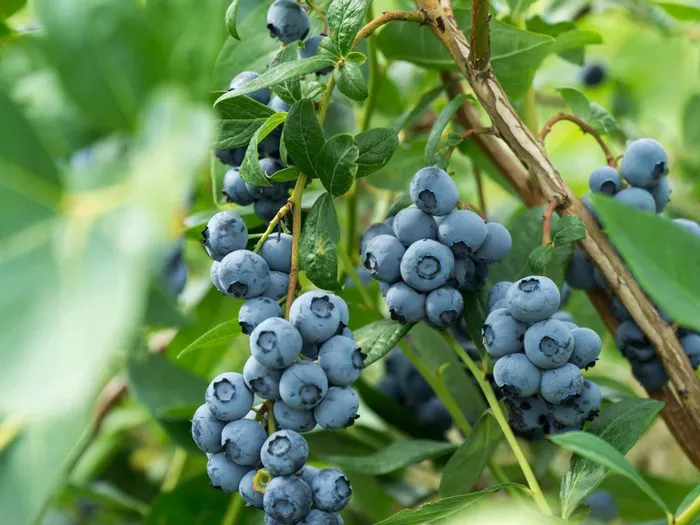Blueberries, with their sweet and tangy flavor, are not just delicious fruits but also prized ornamental shrubs in gardens. However, to ensure these plants thrive and produce abundant harvests, proper feeding is crucial. In this comprehensive guide, we delve into the intricacies of feeding blueberry plants to promote optimal growth and fruiting.
Understanding Blueberry Nutritional Needs
Before diving into specific feeding regimes, it’s essential to grasp the nutritional requirements of blueberry plants. Like all plants, blueberries need a balanced diet of essential nutrients to grow vigorously and produce high-quality fruits. The primary macronutrients required by blueberries are nitrogen (N), phosphorus (P), and potassium (K), often represented by the N-P-K ratio on fertilizer labels.
Nitrogen is vital for foliage growth and overall plant vigor, phosphorus supports root development and flower formation, while potassium enhances fruit quality and disease resistance. Additionally, blueberries have specific micronutrient requirements, including magnesium, calcium, sulfur, iron, manganese, zinc, and boron, which play crucial roles in various physiological processes.
Choosing the Right Fertilizers
When it comes to feeding blueberry plants, selecting the appropriate fertilizers is paramount. Blueberries prefer acidic soil with a pH range of 4.5 to 5.5, so it’s essential to use fertilizers specifically formulated for acid-loving plants. Acidic fertilizers typically contain ammonium sulfate or urea as nitrogen sources, which help maintain soil pH while providing essential nutrients.
Organic fertilizers, such as composted manure, blood meal, bone meal, and fish emulsion, are excellent choices for feeding blueberry plants. They not only supply essential nutrients but also improve soil structure and microbial activity. Additionally, slow-release fertilizers or controlled-release fertilizers are beneficial as they provide a steady nutrient supply over an extended period, reducing the risk of over-fertilization.
Feeding Schedule
Establishing a feeding schedule is crucial for maintaining the health and productivity of blueberry plants. Here’s a recommended feeding schedule to follow throughout the growing season:
1. Early Spring: As blueberry plants break dormancy and begin new growth in early spring, apply a balanced fertilizer with a higher nitrogen content to promote lush foliage development. Avoid excessive nitrogen, as it can lead to excessive vegetative growth at the expense of fruiting.
2. Late Spring: Prioritize phosphorus and potassium applications in late spring to support flower bud formation and fruit set. A fertilizer with a higher phosphorus and potassium content, such as a 5-10-10 or 4-12-8 blend, is ideal for this stage.
3. Early Summer: After fruit set, switch back to a balanced fertilizer with a higher nitrogen content to support fruit development and overall plant health. Apply the fertilizer evenly around the drip line of the plants and water thoroughly to ensure proper nutrient uptake.
4. Late Summer to Early Fall: As the growing season winds down, reduce fertilizer applications to avoid stimulating new growth that may be susceptible to frost damage. Instead, focus on maintaining soil moisture and providing adequate irrigation to support fruit ripening.
5. Fall: In late fall, after the growing season has ended and the plants have gone dormant, apply a slow-release fertilizer or organic amendments, such as compost or aged manure, to replenish soil nutrients for the following year.
Special Considerations
While following a regular feeding schedule is essential, it’s also crucial to monitor soil pH and nutrient levels regularly. Blueberries are sensitive to soil pH, and any significant deviations from the optimal range can affect nutrient uptake and plant health. Conduct soil tests annually and amend the soil as needed to maintain pH within the recommended range.
In addition to fertilizer applications, incorporating organic mulches, such as pine bark or wood chips, around blueberry plants can help conserve soil moisture, suppress weeds, and gradually release nutrients as they decompose. Mulching also helps insulate the soil and regulate temperatures, which is particularly beneficial in regions with hot summers or cold winters.
Conclusion
Feeding blueberry plants is a fundamental aspect of their care and maintenance, directly impacting their growth, fruiting, and overall health. By understanding their nutritional needs and implementing a proper feeding regime, gardeners can ensure that their blueberry plants thrive and produce bountiful harvests year after year. Remember to choose the right fertilizers, follow a consistent feeding schedule, and monitor soil conditions to promote optimal growth and fruit quality. With the right care and attention, your blueberry plants will reward you with delicious berries for seasons to come.


